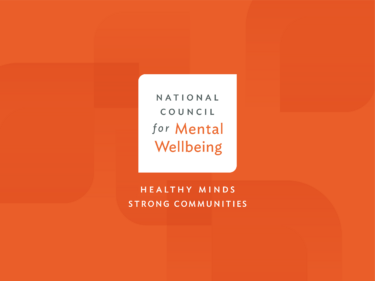Talk With Us Before You Talk about Us
To address the public health crisis of alcohol and other drug-related overdose and harm, prominent communications campaigns are aimed at preventing substance use disorder and increasing awareness of and access to support services for problematic substance use.
If we were to widely adopt health equity principles, we could create inclusive frameworks for these campaigns — frameworks that would reflect the diversity of the population and subgroups of individuals with substance use challenges.
This article is the first of two addressing health equity in communications campaigns that target addiction and substance use challenges. It will delve into the importance of ethically engaging with the substance use population, acknowledging the diverse range of identities within this group, and the crucial role communities play in being part of the solution. We will also explore how effective health equity communication campaigns pay special attention to word choice and language, and how that enhances the effectiveness of public health communication campaigns targeting addiction and substance use challenges by destigmatizing and empowering the individuals we are aiming to reach.
Nothing About Us Without Us: Ethically Engaging the Substance Use Population
The slogan of “nothing about us without us” originated with the South African disability rights movement that sought to overcome systematic oppression and empower individuals with disabilities during the 1990s. As the substance use field seeks to draw lessons from successful movements, it finds common threads interwoven not only with disability rights but also with HIV/AIDS movements. Agnostic to the actual topic, an inclusive health communication campaign starts with the individuals at the heart of the issue — in this case those in active addiction or recovery. Incorporating lived and living experience ensures that the campaign narrative resonates with the actual people we aim to reach.
Ethically engaging the substance use population means avoiding tokenism and symbolic attempts to use the insights and stories of individuals, presenting an illusion of inclusivity. A health equity approach to campaigns demands including a diverse group of individuals: active drug users, those who struggle with chaotic use and those in sustained recovery to better represent a variety of experiences. This entails seeing community engagement not as a one-time focus group, but as a continuous process to build trust and strengthen relationships. This also means investing in inclusion at all levels or stages of a campaign, from ideation to creative to dissemination, and fairly compensating those with lived experience for their time. This kind of ongoing engagement leads to joint decision-making and shared responsibility for campaign content and outcomes.
Together We Rise: The Power of Community
While incorporating the community is critical, uplifting the power of that community is equally so. Health equity campaigns emphasize the positive actions and solutions of the communities affected, working to highlight the power and strengths of these communities. This is a departure from traditional approaches that disproportionately rest in problem identification and disempower collective action by overemphasizing the individual.
For example, a campaign aimed at at-risk Black and Latinx populations may tap into the well-established social ecosystems that thrive within these communities. Working with the complex interplay between individual, relationship, community and societal factors — interplay that strengthens these groups — will help sustain healing and connection over time and achieve population-level impact.
Intersectionality Is the Name of the Game: Diversity Isn’t Clear Cut
While it’s vital to recognize diversity, it’s equally important to understand that it isn’t clear cut. Health equity is intersectional: Diversity exists across and within a community of people. Health campaigns centered on alcohol and other drug use are more successful when they recognize and reflect this intersectionality. This diversity can be defined by lots of different factors and even reflected in the differing health literacy levels that exist within the substance use population, requiring campaign language to be simple and accessible with plain language and active verbs.
Health equity campaigns recognize that because of the differences in cultural norms, beliefs and other factors, some members of the substance use audience may not be able to follow certain public health recommendations. For example, certain 12-step programs offer religious or spiritual guidance that may not fit with the individuals’ own beliefs, such as Alcoholics Anonymous, which prescribes the need for a “higher power.” Another example can be found in abstinence-only treatment models, which can misalign with the desire of some individuals to practice moderation.
Learn the Lingo: The Language We Use Matters
It is important in any public health campaign to use the preferred terms for the target population, even while recognizing that there isn’t total agreement on these terms. For addiction populations, that means avoiding certain stigmatizing words, such as “abuse,” “abuser,” “clean,” or “dirty.”
Person-first language is also key. Put their humanity before the health condition. Avoid terms like “junkie” or “user,” which imply that the person is their illness or disease. Instead, swap in language such as “individual with a substance use disorder” or “person in chaotic substance use.” This person-first language can also be extended to the concept of group-first language.
Further, health equity campaigns avoid descriptions such as “high-risk people,” “marginalized groups” or “underserved populations,” because these terms imply that addiction and substance use are inherent to the population itself and not a result of other causal factors. Instead, try campaign language that better explains why or how certain individuals may be more affected by substance use than others. Change phrasing to put people first: people with a higher risk of substance use disorder development, groups that have been economically marginalized, populations that have limited access to outpatient treatment.
Amplify Impact With Health Equity
Adopting a health equity approach in addiction-focused public health campaigns can significantly transform societal perceptions and responses to substance use challenges. By incorporating this approach, we can more effectively cater to the diverse needs of the communities we serve, while actively combating systemic discrimination and inequity.
The integration of health equity into these campaigns involves ethical engagement with the substance use population, recognition of diversity within this group, and the amplification of the vital role communities play in the solution. Coupled with careful attention to language, this approach not only deepens our collective understanding of the complexities of substance use, but also allows us to provide more accurate and effective support for those on their journey to wellbeing.
Author
Senior Advisor, Substance Use Disorder in the Strategy and Growth Office
National Council for Mental Wellbeing
See bio
Guest Author
Director, Practice Improvement and Consulting
National Council for Mental Wellbeing



